Lexus UX: luxury self-charging hybrid comfort
Futuristic angles, comfortable ride, and plenty of tech
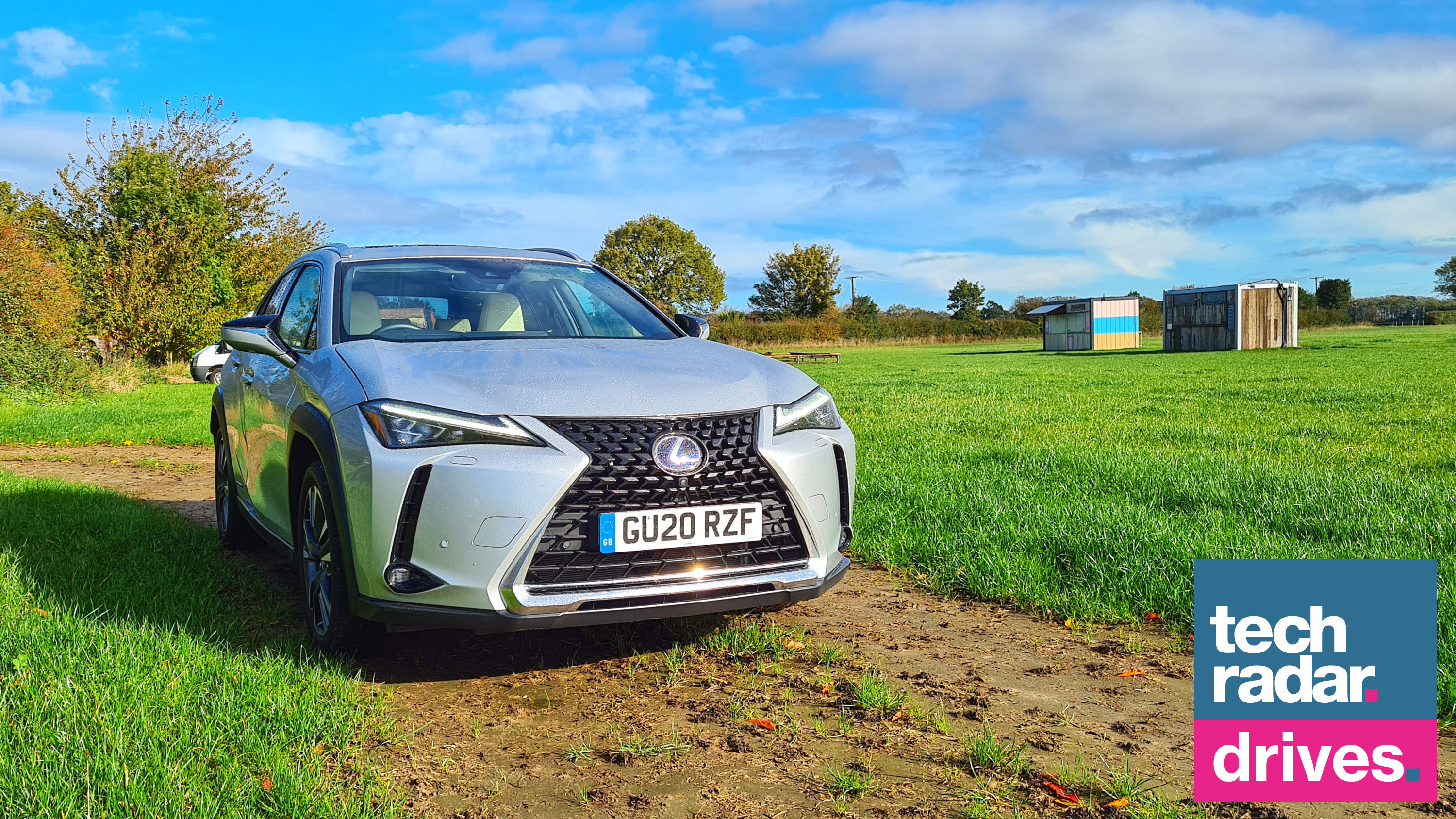
If you're in the market for a self-charging hybrid car and want to travel in comfort and luxury, the new Lexus UX is here for your consideration.
The compact SUV boasts futuristic angles, a comfortable ride, power when you need it and plenty of tech under the hood.
Lexus UX prices start at £29,950 / $32,900 / AU$51,000 for the two-wheel drive model, and £38,000 / $35,100 / $71,000 for all-wheel drive (AWD). Our top-of-the-range UX 250h Takumi E-Four AWD with a handful of extras came to £41,420 (around $39,800 / AU$73,000).
This makes the UX more expensive than many compact SUVs, but it provides an additional level of luxury which you may find better suits your requirements - so long as your budget can stretch to it.
- Renault Zoe: a zippy electric car made for the city
- Hyundai Kona Electric: all-electric SUV has tech and plenty of range
- Audi e-tron: driving the first all-electric Audi
Lexus UX design
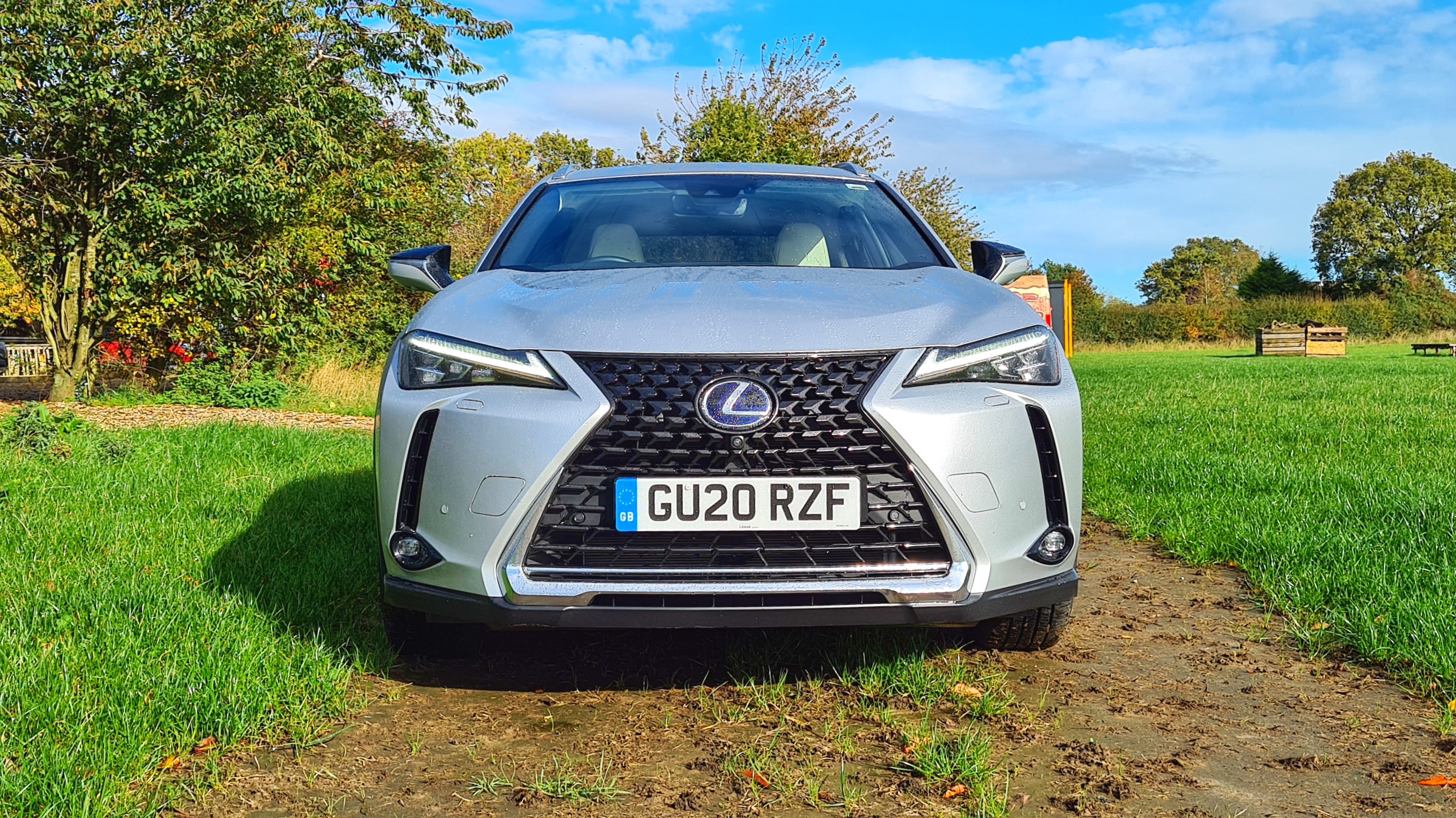
Lexus UX 250h Takumi
Engine: 2.0 liter hybrid
Power: 150bhp
0-62mph: 8.7 seconds
Top speed: 110mph
Fuel efficiency: 47mpg
Price: £41,420
The UX inherits the futuristic, angular design that Lexus uses across all its new cars. It gives the car a distinctive look, one that stands out from many other vehicles on the road.
Lexus continues with its enlarged front grille design too, which dominates the face of the UX, while shapely door panels provide an intriguing side profile.
The one, small exterior question mark is the plastic wheel arches, which detract slightly from the overall premium aesthetic. For those who prefer a more off-road look this feature may be a welcome one, but for those looking for a slick look these arches do stand out – especially if you opt for one of the lighter body color options.
Get daily insight, inspiration and deals in your inbox
Sign up for breaking news, reviews, opinion, top tech deals, and more.
Inside and the cabin has a relatively modern look and feel, but the Lexus UX retains a few classic touches including the analogue clock next to the large central display and the neatly stitched leather on the dash, seats and steering wheel.
The seats are comfortable and not only heated, but also air-cooled, ensuring you can stay the perfect temperature, no matter the weather.
There's good head and leg room for the front seat passengers, and they also benefit from a comfy central armrest with a sizable storage bin hidden under the movable arm. There are a couple of uncovered, easy-to-reach cup holders too, just in front of the gear shift.
In the back things are still comfortable, although not quite as spacious as up front. You can fit three adults across the back seat, although we'd only recommend this for short journeys as it's a little on the tight side.
One negative with the rear seats of the Lexus UX is the lack of storage, with no space afforded to passengers in the doors. The storage story improves at the back though, with plenty of luggage space on offer, making the UX a suitable family option.
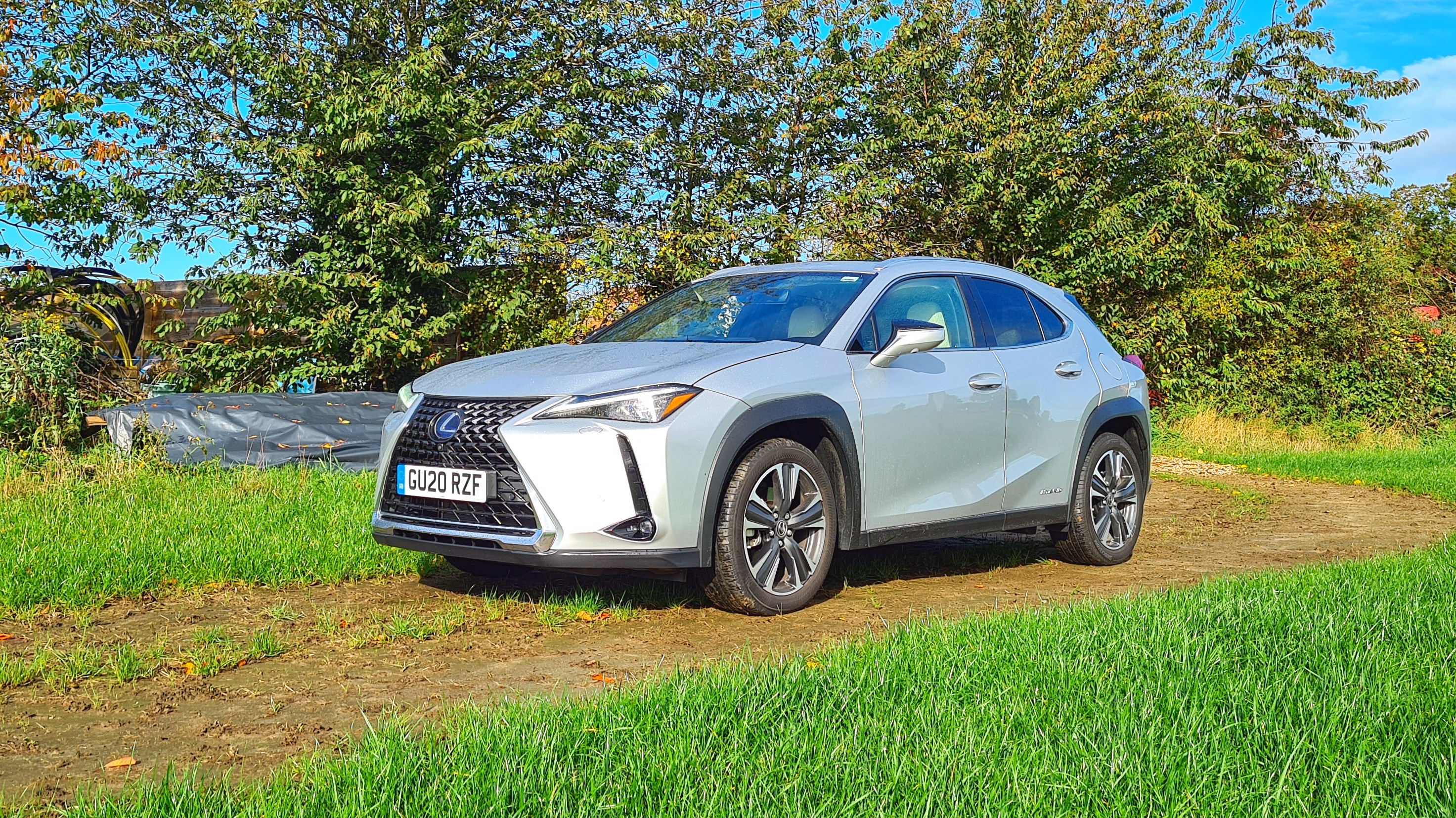
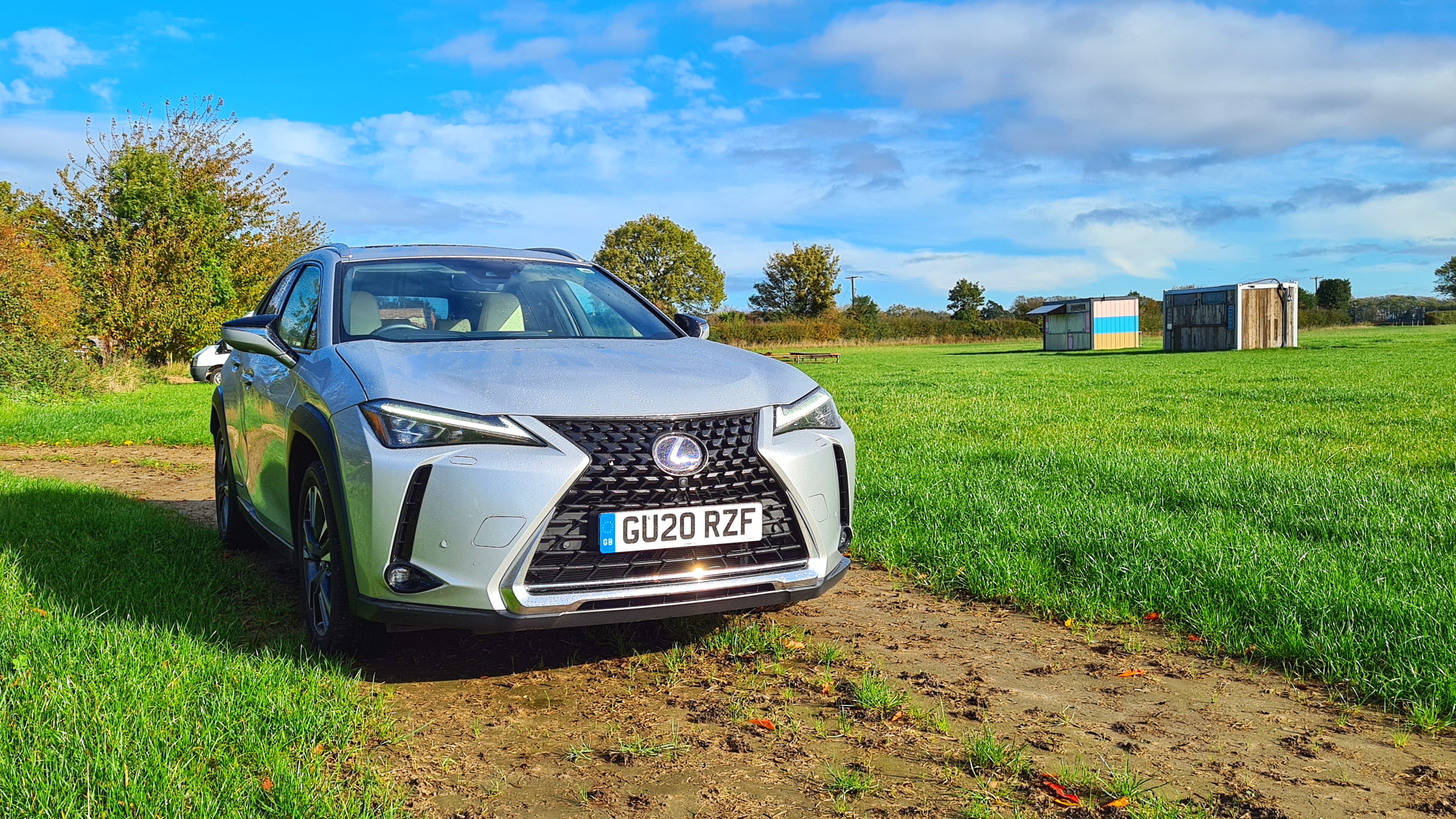
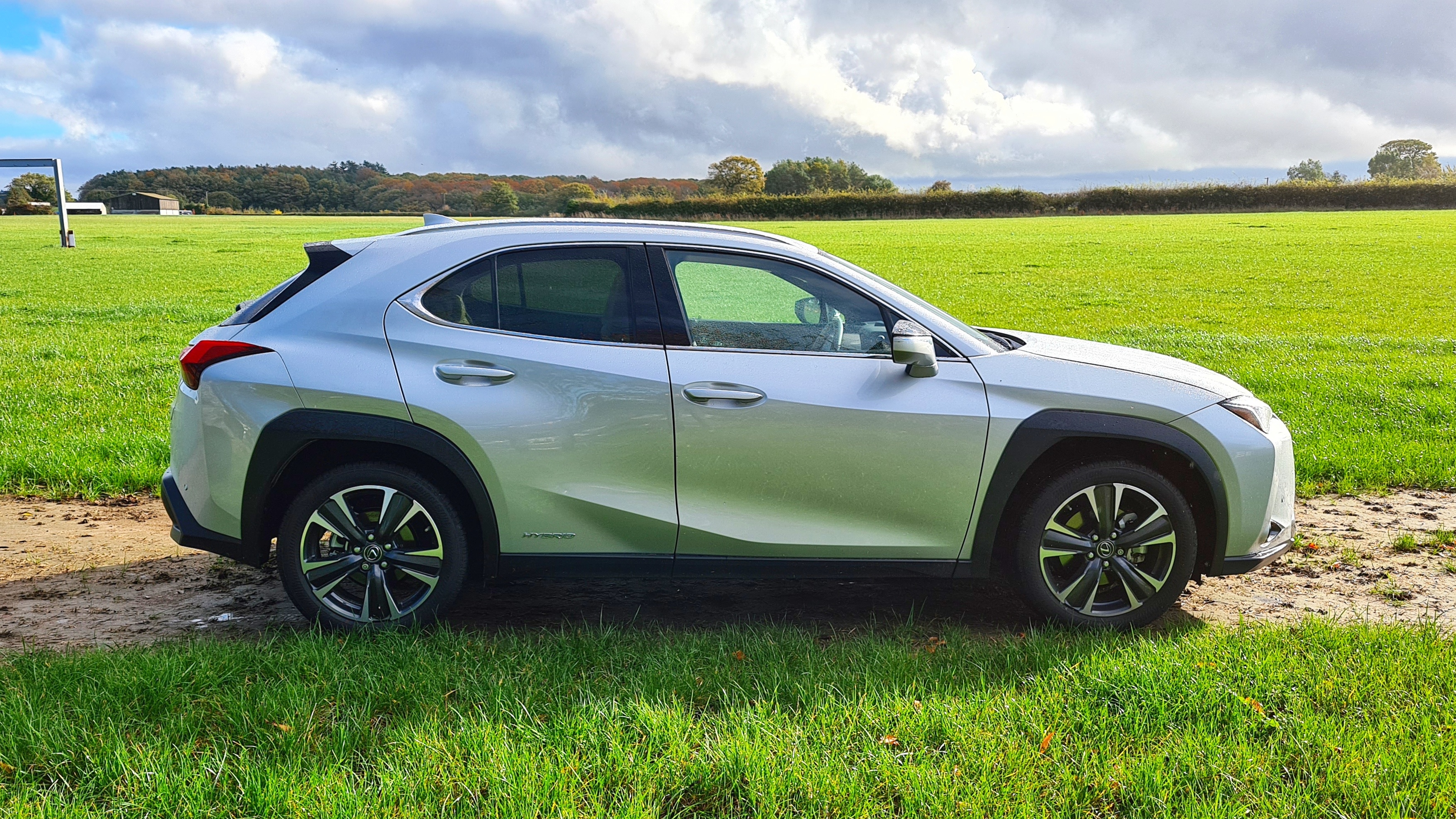
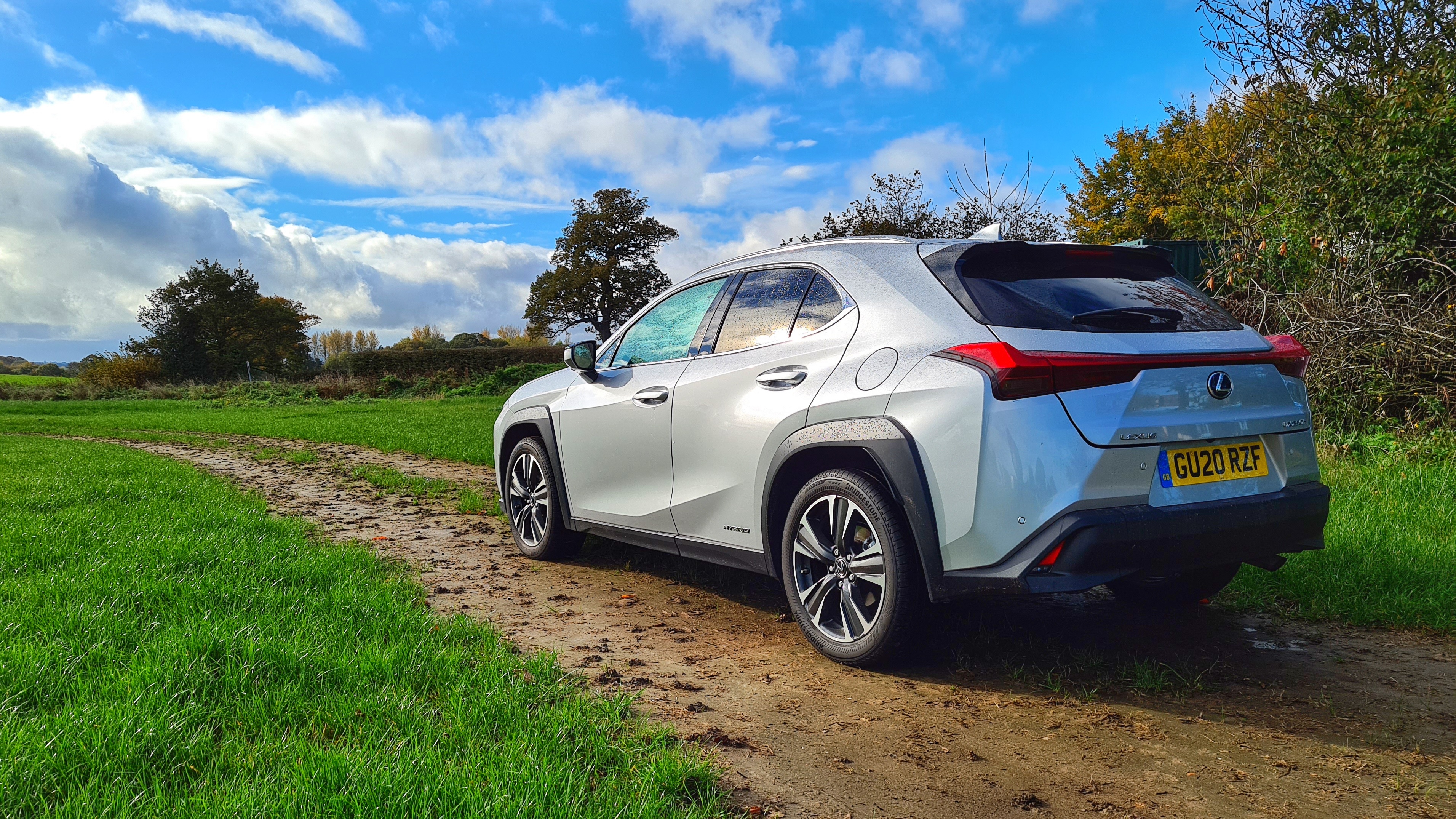
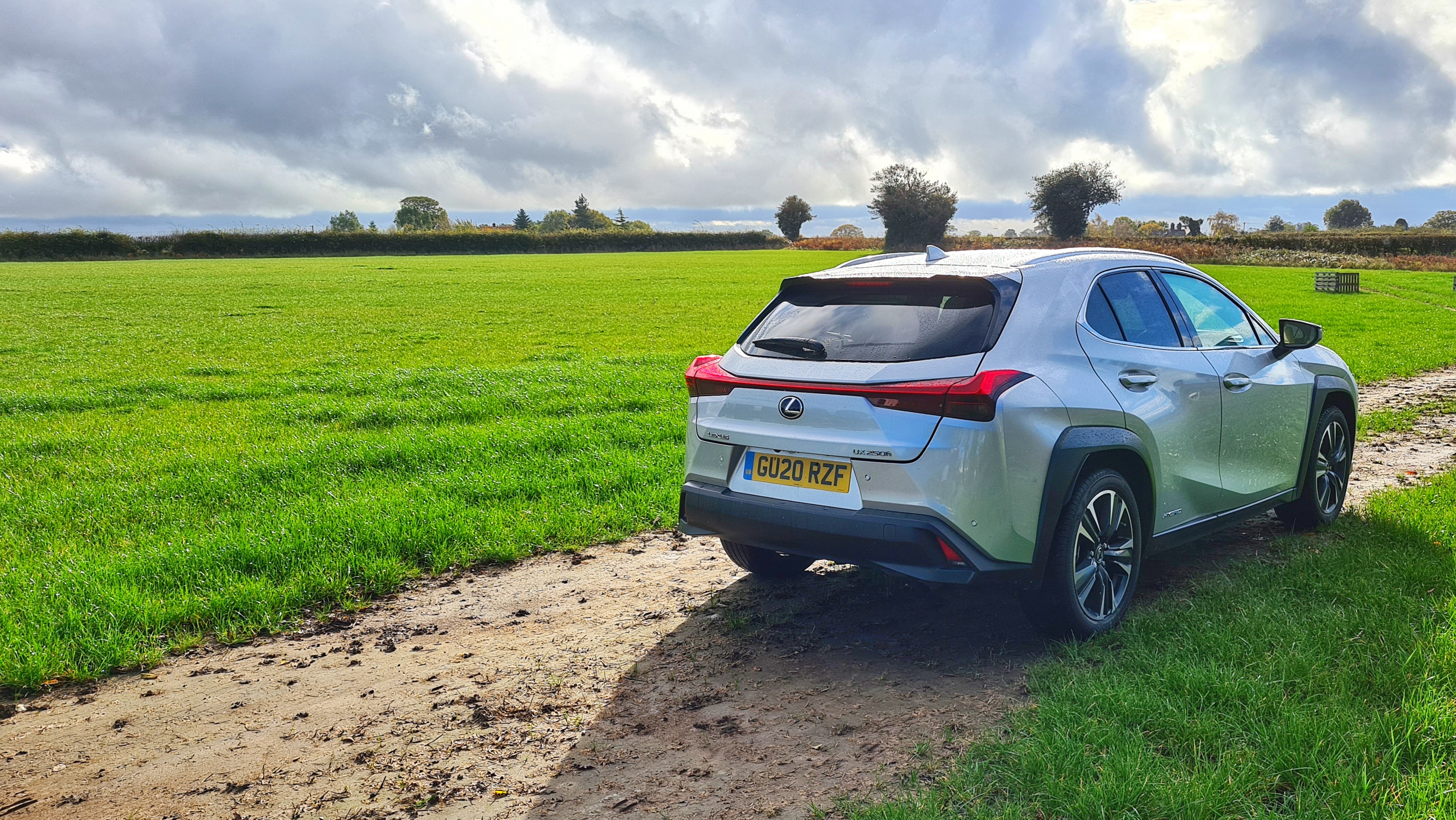
Lexus UX drive
The Lexus UX features a 2.0 liter self-charging hybrid engine, which produces quiet, economical driving.
We drove more than 400 miles in the UX, over a mix of roads and at various speeds, and our average miles per gallon (mpg) was around 43-45mpg. That's a relatively solid showing considering there was a decent amount of motorway driving in that, and if you drive shorter distances at lower speeds you'll be able to improve on those figures.
The hybrid engine in the UX automatically shifts between petrol and EV (electric vehicle) modes, with EV mode engaged under braking, at very low speeds and when you’re stationary - preserving your fuel.
If you really want to be kind on your fuel usage, you can force the UX into a fully EV mode via a button next to the gear shift. This will allow you to travel very short distances on the eclectic energy - but not much further.
The Lexus UX can reach a top speed of 110mph and can get you from 0-62mph in a relatively swift 8.7 seconds. Acceleration is smooth, and the UX is happy driving around town as well as traveling at cruising speed.
There are three driving modes to pick from: Sport and Normal and Eco. The latter limits acceleration and increases battery regeneration under braking, while switching to Sport provides a noticeable difference in the other direction with more response and better acceleration.
Overall, the Lexus UX provides a good driving experience with just enough performance when you need it. The slightly raised ride height of this compact SUV gives you a better view of the road, and the quiet, comfortable cabin makes long journeys less taxing.
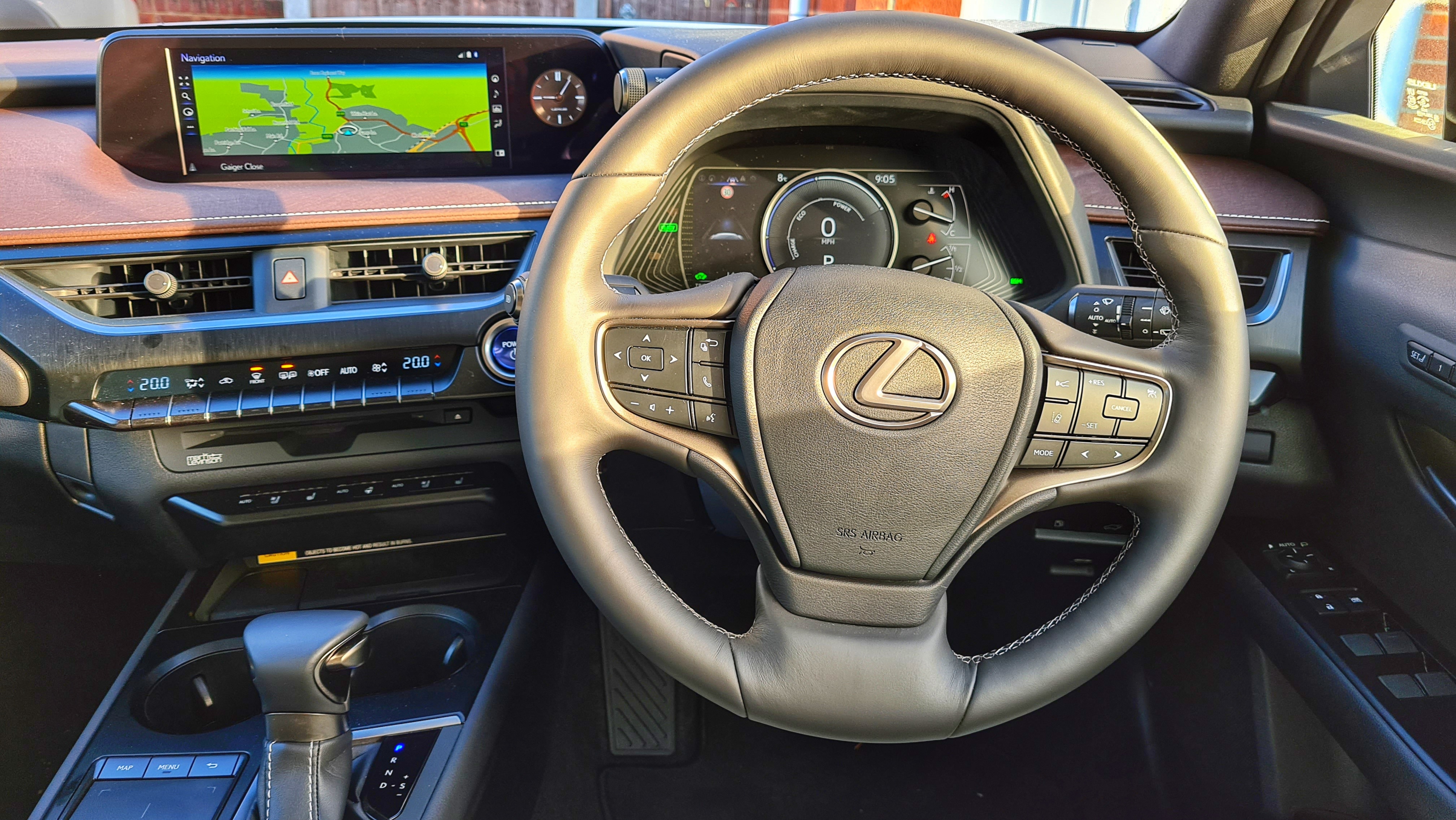
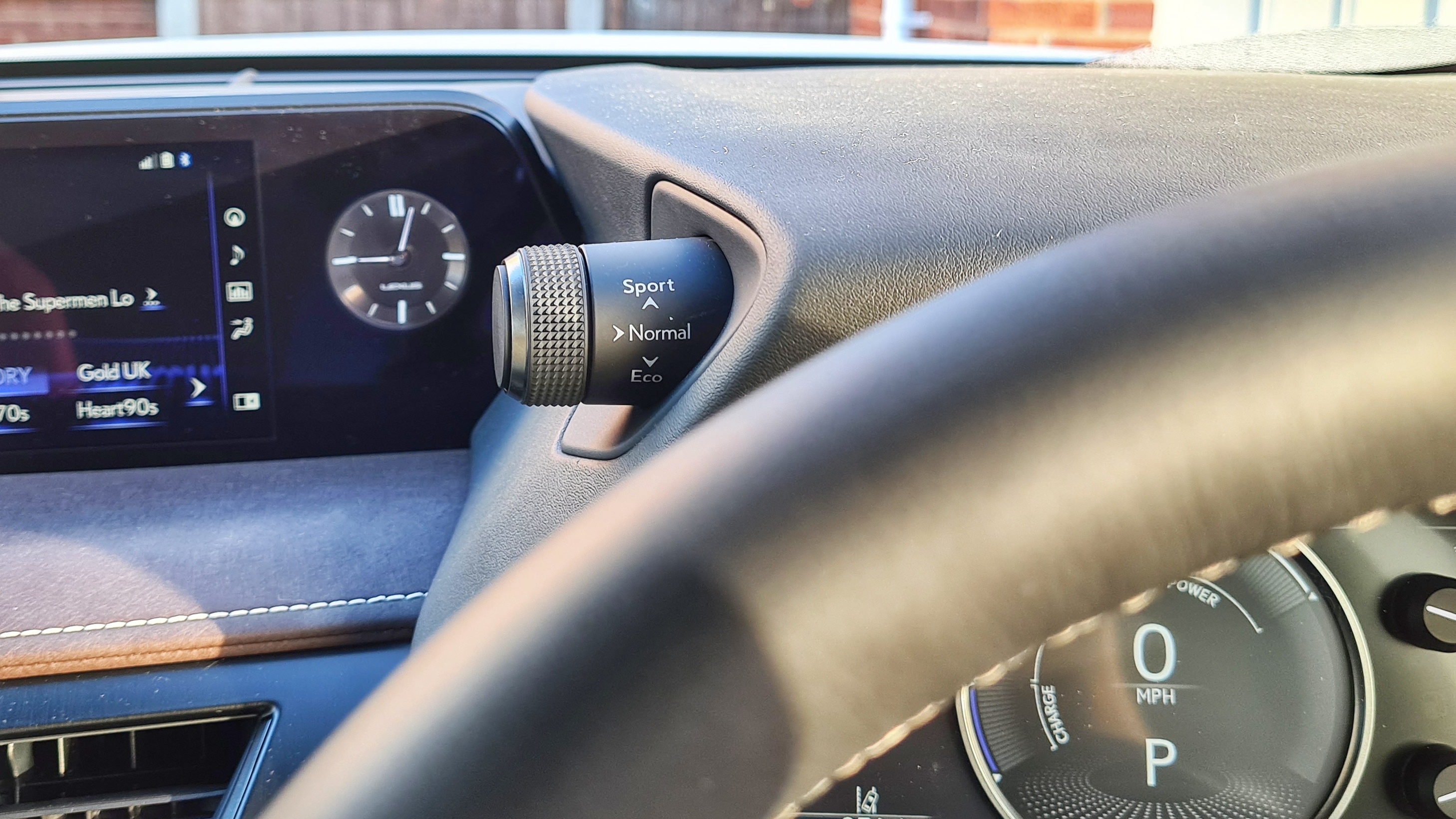
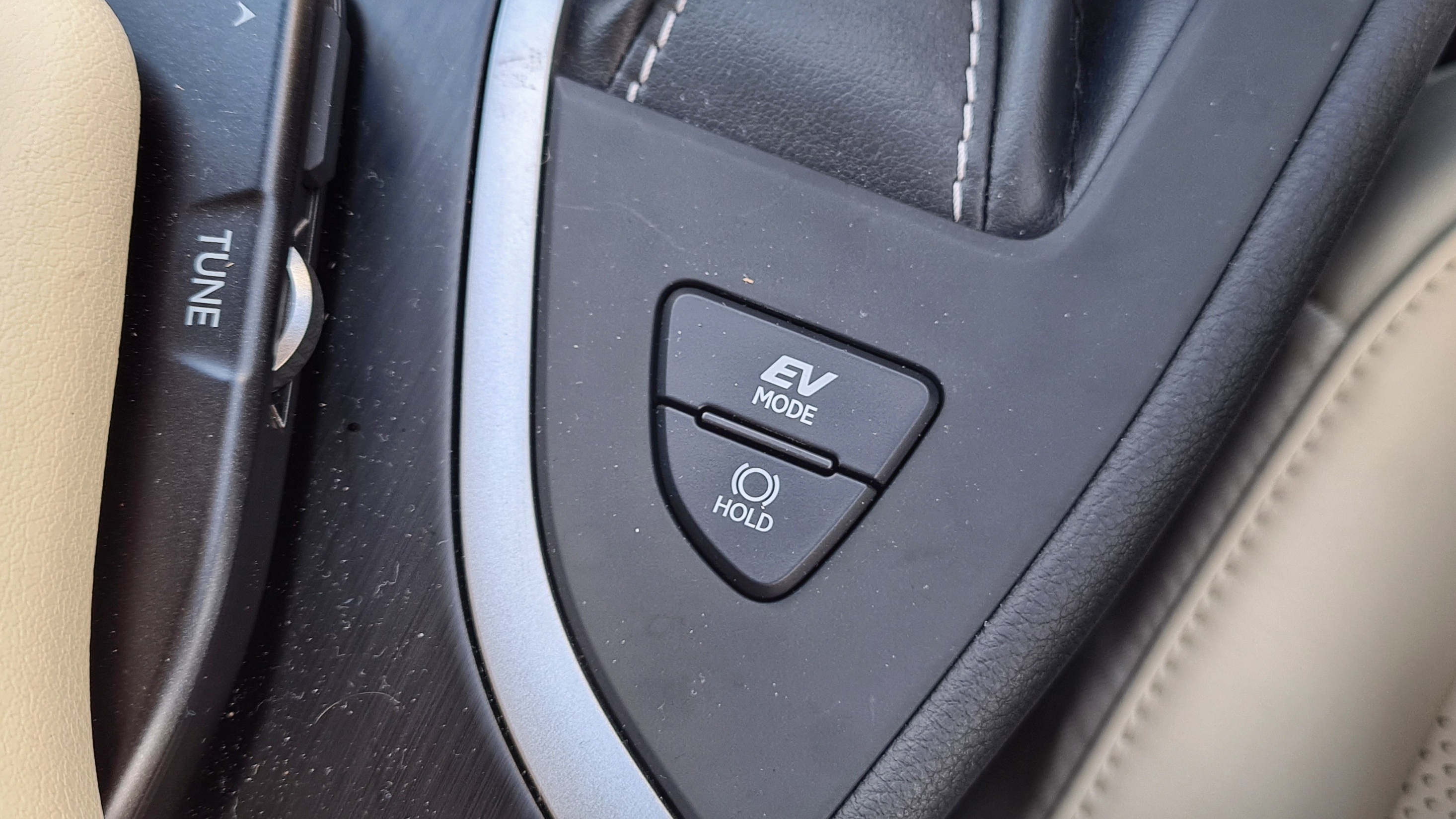
Lexus UX specs and tech
The Lexus UX features a wealth of tech and driver aids, with the staples of premium vehicles all present, including automatic lights including high beam assist, automatic wipers, climate control, adaptive cruise control and lane assist.
These are all easy to use and make driving the UX a more straightforward experience, although we did find the auto high beam assist was sometimes a touch sluggish to switch off when oncoming traffic appeared.
We also got front, rear and side cameras providing us with a 360-degree view around the car – especially useful when parking – and they're paired with parking sensors for even more peace of mind.
While it all worked as expected, we were a little disappointed with the resolution of the cameras, as they didn't appear to be the clearest we've used.
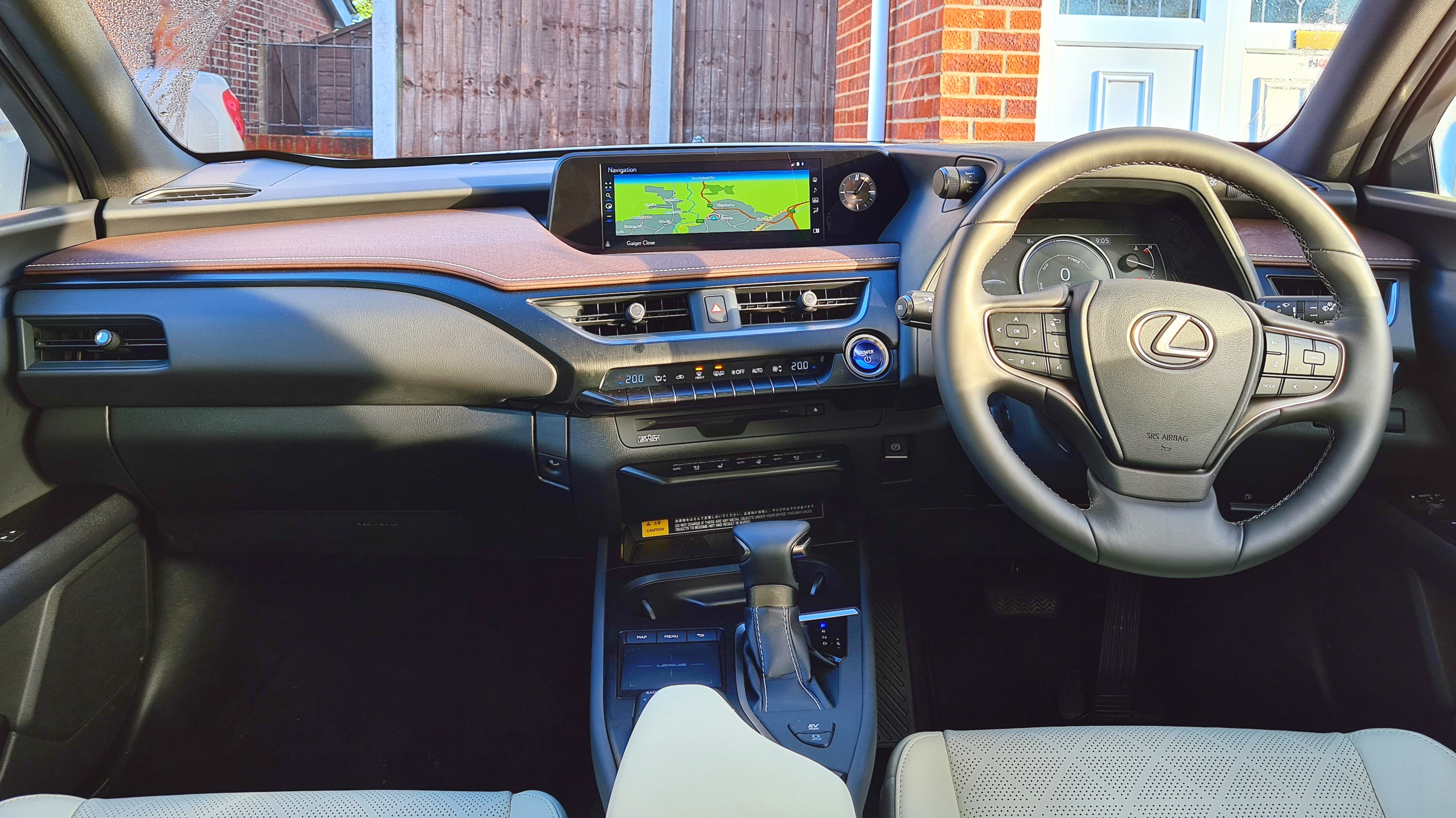
A 10.3-inch display sits on top of the dash, giving you access to navigation, music, radio and more. You'll find the screen in the UX is set back further into the dash than many displays we see in new cars these days – and for good reason.
While the rest of the industry adopts touchscreen technology, Lexus is continuing to stick with non-touch options, so the screen's recessed position on the dash makes it harder to reach with your finger – because you don't need to.
Instead you get a touchpad next to the gear shift, which operates in a similar way to a mouse trackpad on a laptop. There are a handful of shortcut buttons too, allowing you to jump to main menus such as navigation and radio.
The trackpad's touch control is okay, but we found that it could be a little clunky at times, especially if there were a series of smaller icons on screen and we were trying to hit one specific option. It takes a little getting used to, and it does become easier over time - although we'd still prefer the ease of a touchscreen.
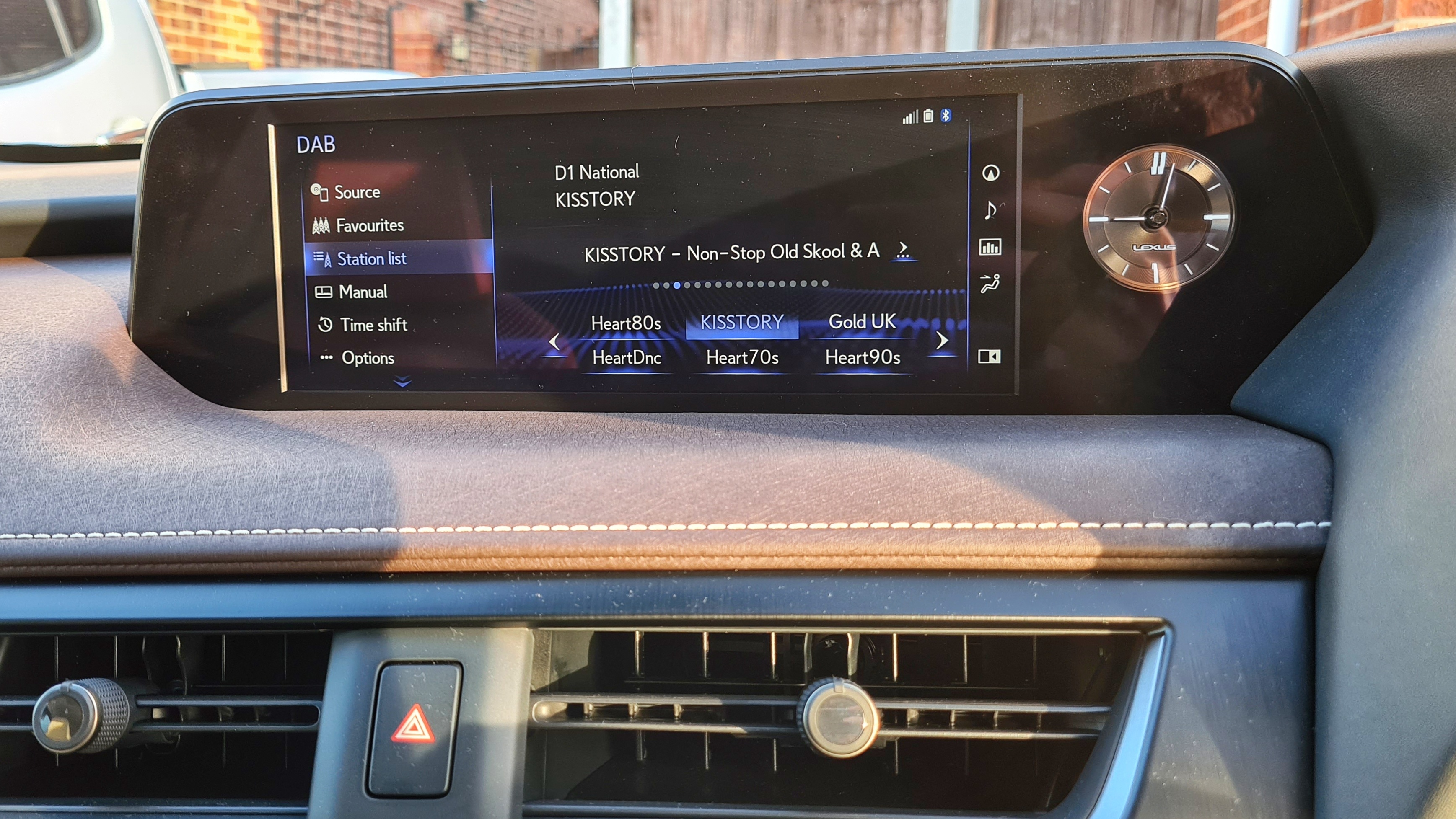
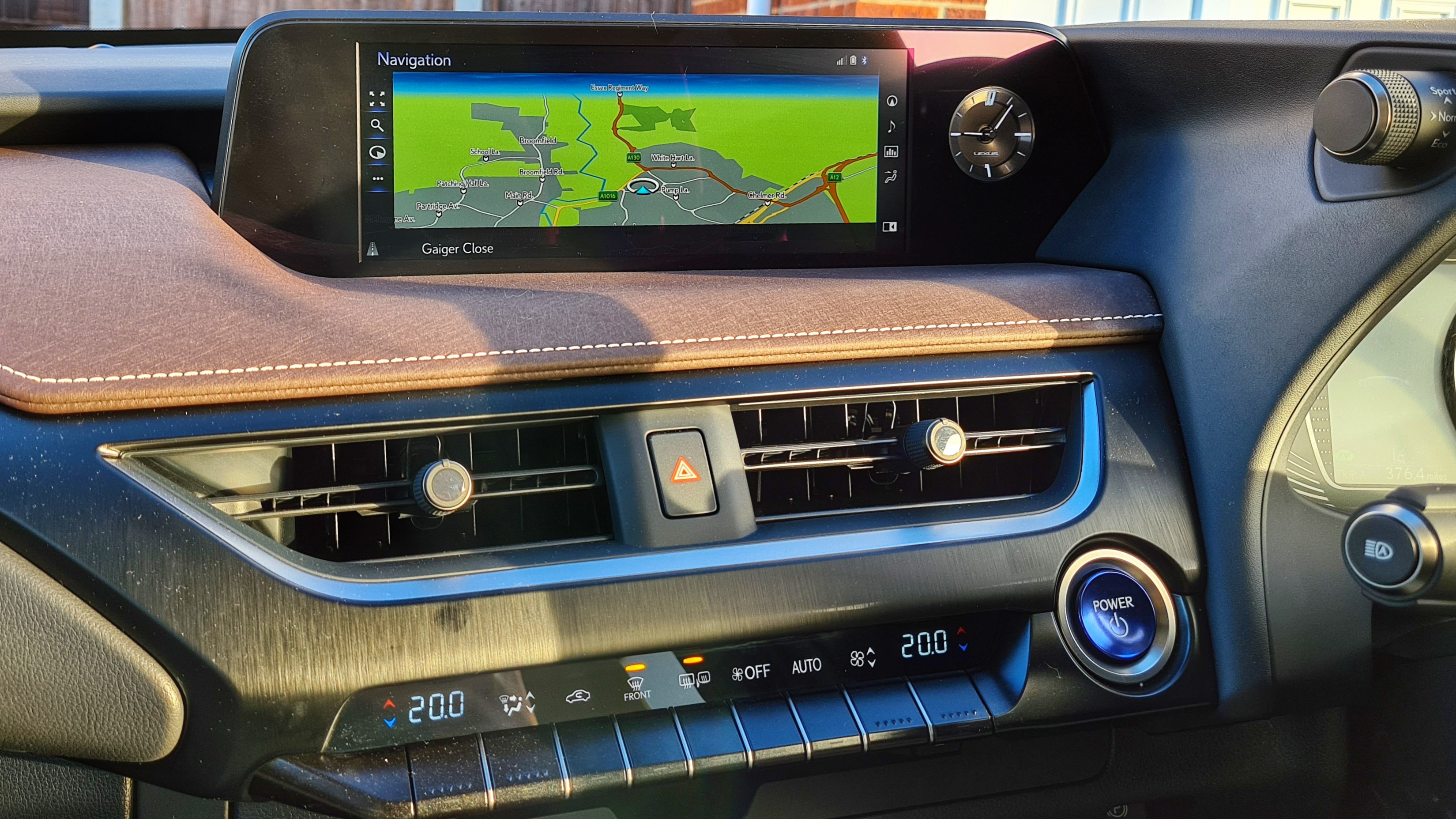
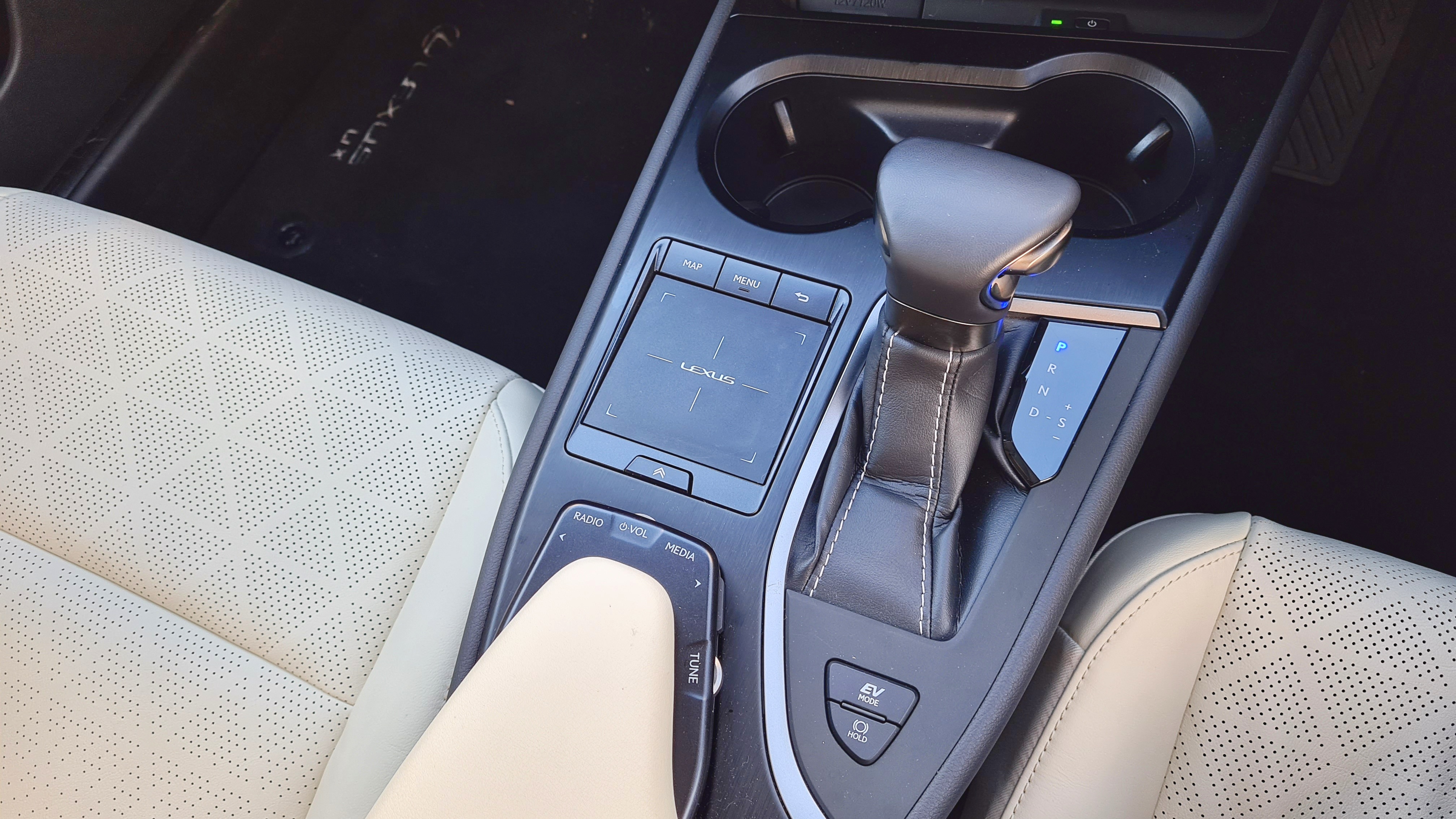
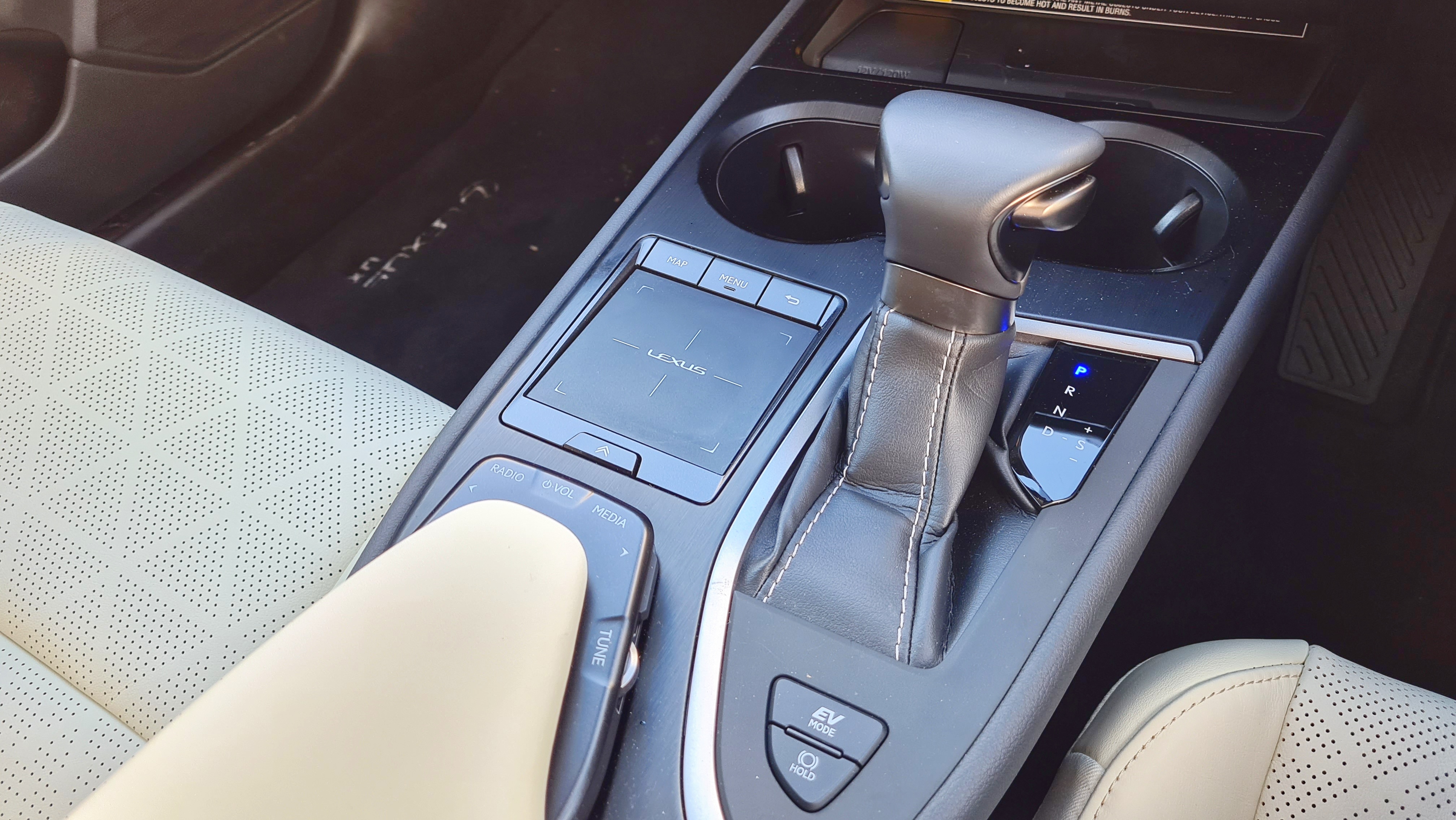
While the control may be a little hit and miss, the display itself is bright and clear and some of the information here can be mirrored in the digital cluster behind the steering wheel.
The LCD screen to the left of the main circular speedometer can display a variety of information from a compass and navigation directions, to music playback and driver assist options.
What's nice is the navigation directions not only show for the in-built navigation in the UX, but also from a navigation app from your phone if you have it plugged in for Android Auto or Apple CarPlay.
These systems allow core smartphone apps to be mirrored on the UX's main display – apps such as Google Maps, Apple Maps, Spotify, Messages, WhatsApp and more – giving you control over some of the core features without having to reach for your device.
The phone interfaces are designed for touchscreens, so using the touch pad in the UX isn't quite as efficient - but it still works.
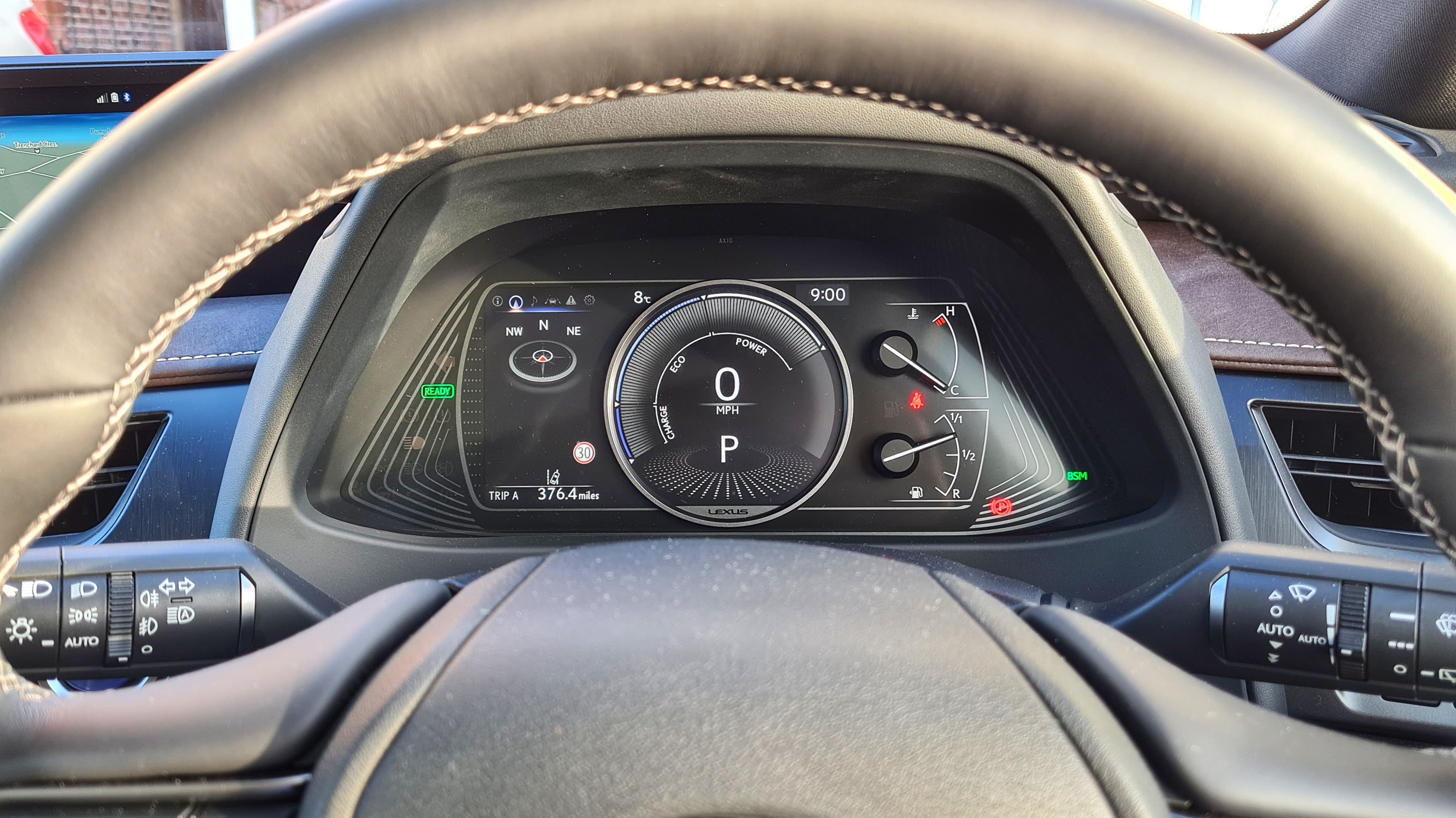
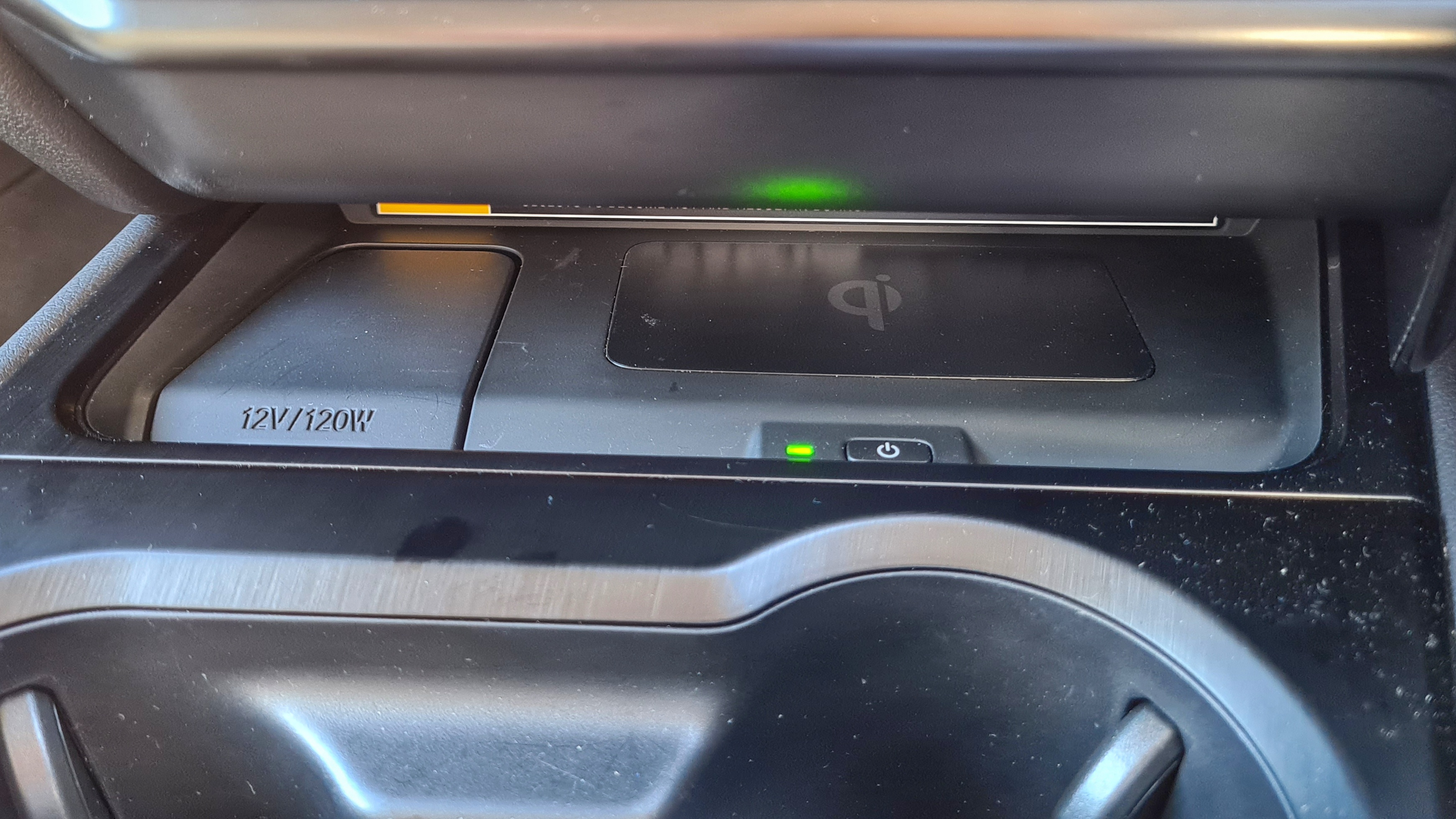
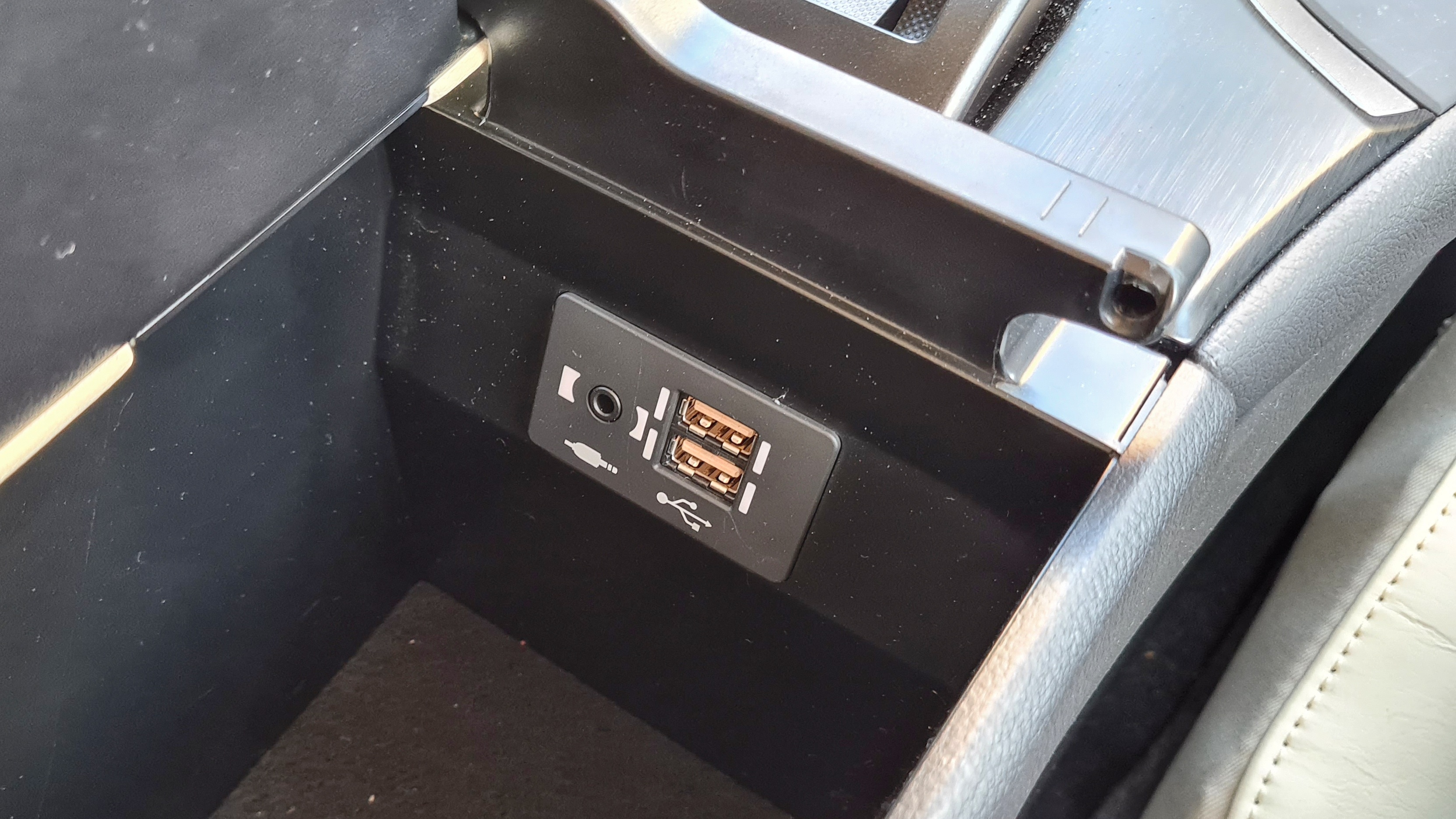
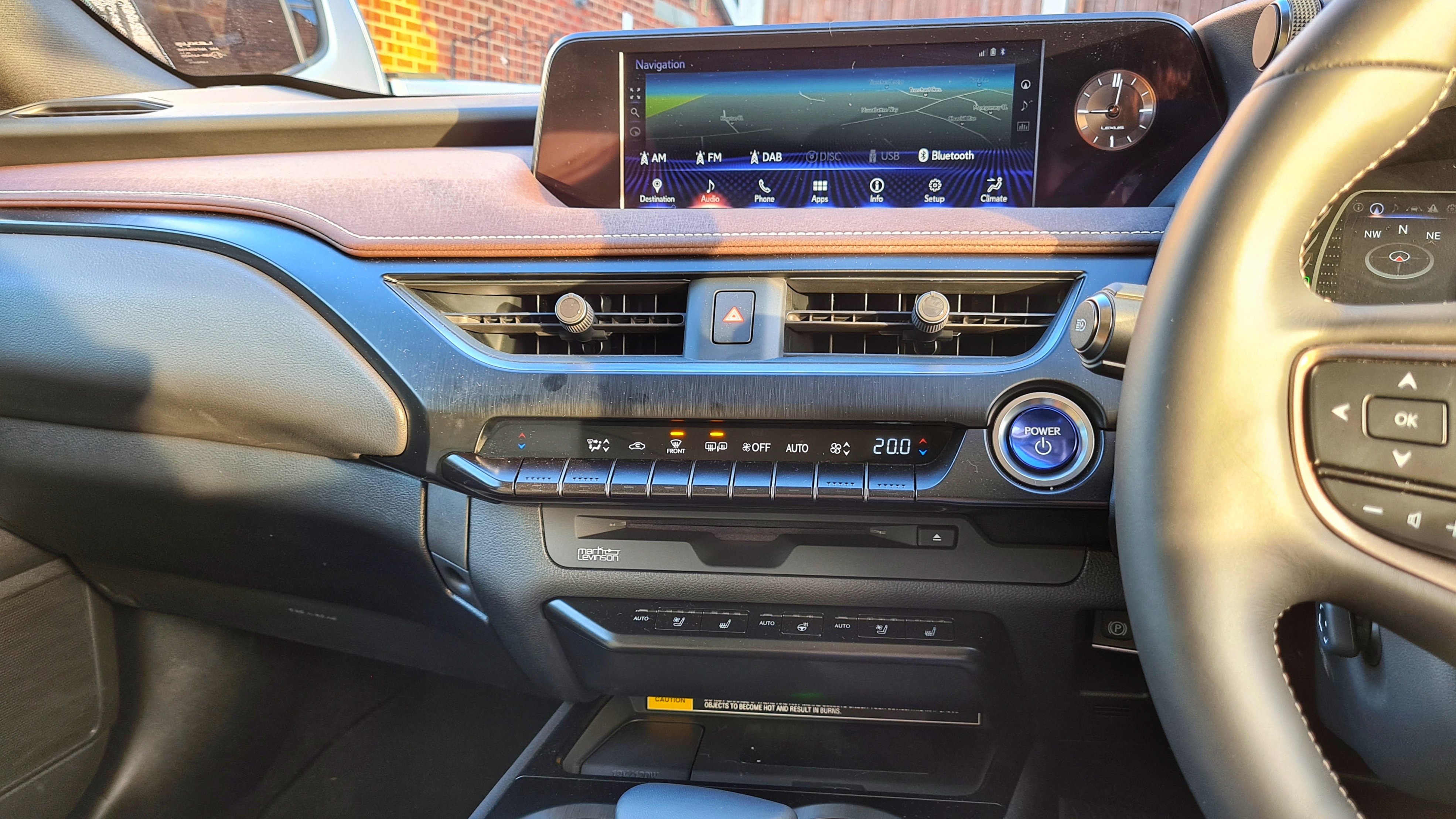
Our UX also came equipped with a heads-up display (HUD), which beamed key driving information – such as our current speed, the road's speed limit, cruise control settings and navigation instructions from the built-in offer (no Auto or CarPlay mirroring here) – into our eyeline on the windshield.
You'll find plenty of buttons on the steering wheel too, some of which control the cluster display and driving functions such as cruise control, while others allow you to manipulate music playback and make and receive calls (if your phone is connected via USB or Bluetooth to the car).
You'll find a wireless charging mat at the base of the center console, allowing you to top up compatible phones without having to physically plug them in. For those who don't have a phone that supports wireless charging, there are two USB ports and a 3.5mm headphone jack in the storage area under the central armrest.
Rear passengers aren't forgotten about either, with two more USB ports accessible to those in the back.

- John McCann is getting behind the wheel to give you an alternative look at the wealth of cars – and the tech inside them – available today. From super-fast sports cars to tech-packed hatchbacks, he'll take you through a range of makes, models, power and price tags in his regular TR Drives column.

TechRadar's former Global Managing Editor, John has been a technology journalist for more than a decade, and over the years has built up a vast knowledge of the tech industry. He’s interviewed CEOs from some of the world’s biggest tech firms, visited their HQs, and appeared on live TV and radio, including Sky News, BBC News, BBC World News, Al Jazeera, LBC, and BBC Radio 4.